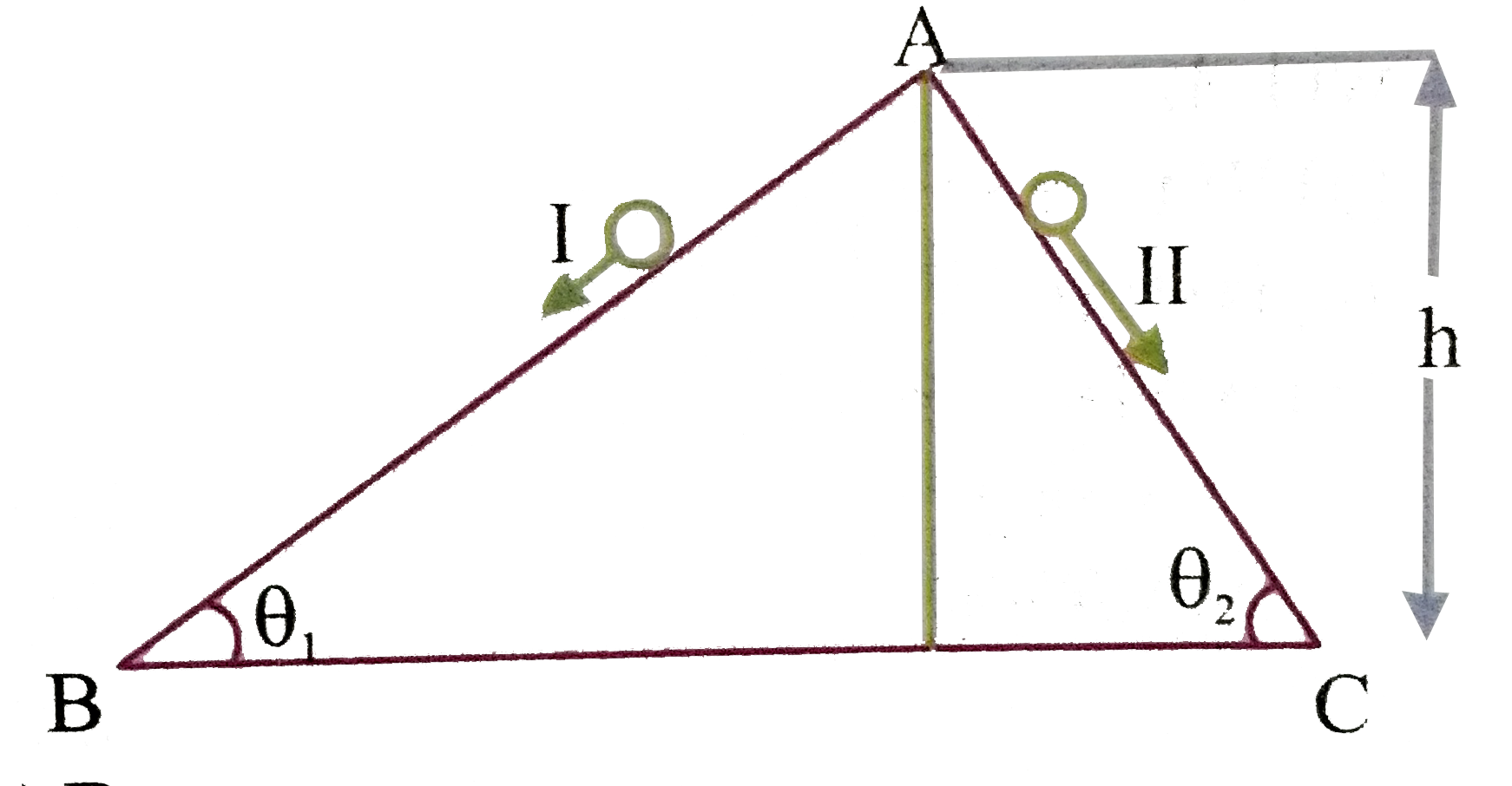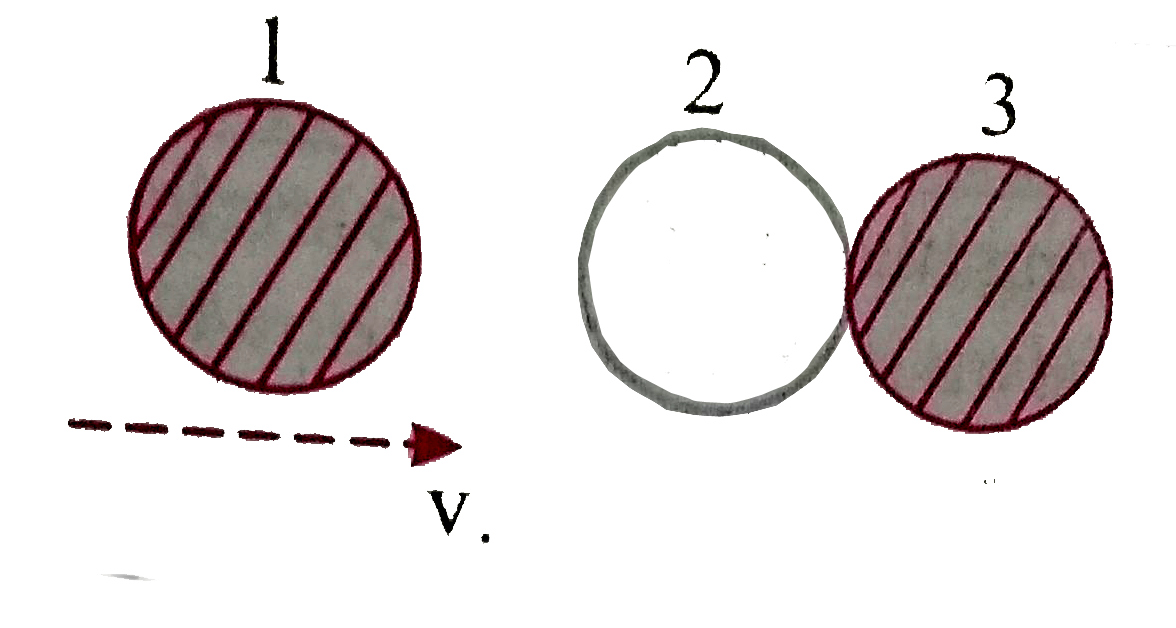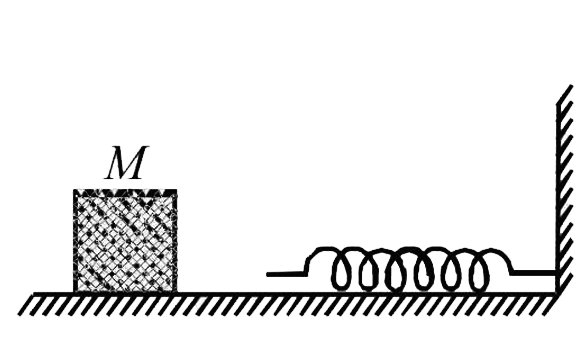Complete Solutions to NCERT (Based Questions) of chapter WORK POWER AND ENERGY of Class 11 book with complete answers and questions
| Class 11 | PHYSICS |
| Chapter | WORK POWER AND ENERGY |
| NARAYANA | NCERT (Based Questions) |
| Number Of Questions | 45 |
| Academic Year | 2023-24 |
An electron and a proton are moving under the influence of mutual forces. In calculating the change in the kinetic energy of the system during motion, one ignores the magnetic force of one on another. This is because,
View SolutionA proton is kept at rest. A positively charged particle is released from rest at a distance `d` in its field. Consider two experiments, one ini which the charged particle is also a proton and in another, a position. In the same time `t`, the work done on the two moving charged particles is
View SolutionA man squatting on the ground gets straight up and stand. The force of reaction of ground on the man during the process is.
View SolutionA cyclist comes to a skidding stop in `10m`. During this process, the force on the cycle due to the road is `200N` and is directly opposite to the motion.
a. How much work does the road do on the cycle?
b. How much work does the cycle do on the road?
View SolutionA body is falling freely under the action of gravity alone in vacuum. Which of the following quantities remain constant during the fall ?
View SolutionDuring inelastic collision between two bodies, which of the following quantities always remain conserved ?
View SolutionTwo inclined frictionless tracks, one gradual and the other steep meet at `a` from where two stones are allowed to slide down from rest, one on each track as shown in Figure. Which of the following statement is correct ?
 .
.
View SolutionA body of mass `0.5 kg` travels in a straight line with velocity `v =a x^(3//2)` where `a = 5 m//s^(2)`. The work done by the net force during its displacement from `x = 0` to `x = 2 m` is
View SolutionA mass of `5kg` is moving along a circular path or radius `1m`. If the mass moves with 300 revolutions per minute, its kinetic energy would be
View SolutionA raindrop falling from a height `h` above ground, attains a near terminal velocity when it has fallen through a height `(3//4)h`. Which of the diagrams shown in figure correctly shows the change in kinetic and potential energy of the drop during its fall up to the ground ?
View SolutionIn a shotput event an athlete throws the shotput of mass `10 kg`with an initial speed of `1 ms^(-1)` at `45^@` from a height `1.5 m` above ground. Assuming air resistance to be negligible and acceleration due to gravity to be `10 ms^(-2)`, the kinetic energy of the shotput when it just reaches the ground will be
View SolutionWhich of the diagrams corectly shows the change in kinetic energy of an iron sphere falling freely in a lake having sufficient depth to impart it a terminal velocity ?
View SolutionA bullet of mass `m` fired at `30^(@)` to the horizontal leaves the barrel of the gun with a velocity `upsilon`. The bullet hits a soft target at a height `h` above the ground while it is moving downward and emerges out with half the kinetic energy it had before hitting the target.
Which of the following statements are correct in respect of bullet after it emerges out of the target ?
View SolutionCalculate the power of a crane in watts, which lifts a mass of `100 kg` to a height of `10 m` in `20 s`.
View SolutionThe average work done by a human heat while it beats once is `0.5 J`. Calculate the power used by heat if it beats `72` times in a minute.
View SolutionTwo identical ball bearings in contact with each other and resting on a frictionless table are hit heat-on by another ball bearing of the same mass moving initially with a speed `V` as shown in figure.

If the collision is elastic, which of the following (figure) is a possible result after collision ?
View SolutionA cricket ball of mass `150g` moving with a speed of `126km//h` hits at the middle of the bat, held firmly at its position by the batman. The ball moves straight back to the bowler after hitting the bat. Assuming that collision between ball and bat is completely elastic and the two remain in contact for `0.001s`, the force that the batsman had to apply to hold the bat firmly at its place would be
View SolutionTwo blocks `M_(1)` and `M_(2)` having equal mass are free to move on a horizontal frictionless surface. `M_(2)` is attached to a massless spring as shown in figure. Initially `M_(2)` is at rest and `M_(1)` is moving toward `M_(2)` with speed `upsilon` and collides head-on with `M_(2)`.

View SolutionFrom a building two balls `A` and `B` are thrown such that `A` is thrown upwards and `B` downwards ( both vertically with the same speed ). If `v_(A) and v_(B)` are their respective velocities on reaching the ground , then
View SolutionSpeeds of two identical cars are u and 4u at at specific instant. The ratio of the respective distances in which the two cars are stopped from that instant is
View SolutionA spring of force constant `800N//m` has an extension of 5cm. The work done in extending it from 5cm to 15cm is
View SolutionTwo masses of `1 kg` and `16 kg` are moving with equal kinetic energy. The ratio of magnitude of the linear momentum is
View SolutionA car, moving with a speed of `50 km//hr`, can be stopped by brakes after at least `6 m`. If the same car is moving at a speed of `100 km//hr`, the minimum stopping distance is
View SolutionA body is moved along a straight line by a machine delivering constant power . The distance moved by the body is time `t` is proptional to
View SolutionA spring of spring constant `5 xx 10^(3) N//m` is stretched initially by 5 cm from the unstretched position. The work required to further stretch the spring by another 5 cm is .
View SolutionConsider the following two statements:
A. Linear momentum of a system of partcles is zero.
B. Kinetic energ of a system of particles is zero.
View SolutionA particle move in a straight line with retardation proportional to its displacement its loss of kinectic energy for any displacement `x` is proportional to
View SolutionA force `vec F = (5 vec i+ 3 vec j+ 2 vec k) N` is applied over a particle which displaces it from its origin to the point `vec r=(2 vec i- vec j) m`. The work done on the particle in joules is.
View SolutionA body of mass `m`, accelerates uniformly from rest to `V_(1)` in time `t_(1)`. The instantaneous power delivered to the body as a function of time `t` is.
View SolutionA particle is acted upon by a force of constant magnitude which is always is perpendicular to the velocity of the particle , the motion of the particles takes place is a plane it follow that
View SolutionA uniform chain of length `2m` is kept on a table such that a length of `60 cm` hangas freely from the adge of the table . The table . The total mass of the chain ia `4 kg` What is the work done in pulling the entire the chain the on the table ?
View SolutionThe block of mass `M` moving on the frictionless horizontal surface collides with the spring constant `k` and compresses it by length `L` . The maximum momention of the block after collision is

View SolutionA particle of mass 0.3 kg subject to a force `F=-kx` with `k=15N//m`. What will be its initial acceleration if it is released from a point 20cm away from the origin?
View SolutionA spherical ball of mass `20kg` is stationary at the top of a hill of height `100m` , it rolls down a smooth surface to the ground , then climbs up another bill of height of `30 m` and final rolls down to a horizontal base at a height of `20 m` about the ground . The velocity attained by the ball is
View SolutionA body of mass `m` is acceleratad uniformaly from rest to a speed `v` in a time `T` . The instanseous power delivered to the body as a function of time is given by
View SolutionA particle of mass `100 g ` is thrown verically upward with a speed of `5 m//s` . The work done by the of gravity during the time the particle goes up is
View SolutionThe potential energy of a `1 kg` particle free to move along the x- axis is given by `V(x) = ((x^(4))/(4) - x^(2)/(2)) J`
The total mechainical energy of the particle is `2 J` . Then , the maximum speed (in m//s) is
View SolutionA mass of M kg is suspended by a weightless string. The horizontal force that is required to displace it until the string makes an angle of `45^@` with the initial vertical direction is
View SolutionA ball of mass 0.2 kg is thrown vertically upwards by applying a force by hand. If the hand moves 0.2 m while applying the force and the ball goes upto 2 m height further, find the magnitude of the force. (Consider `g=10m//s^2`).
View SolutionA `2kg` block slides on a horizontal floor with the a speed of `4m//s` it strikes a uncompressed spring , and compresses it till the block is motionless . The kinetic friction force is compresses is `15 N` and spring constant is `10000 N//m` . The spring by
View SolutionA particle is projected at ` 60(@)` to the horizontal with a kinetic energy `K` . The kinetic energy at the highest point is
View SolutionAn athlete in the Olympic gamed covers a distance of `100 m` in `10 s`. His kinetic energy can be estimated to be in range.
(1) `200 J - 500 J`
(2) `2 xx 10^(5) J - 3 xx 10^(5) J`
(3) `20,000 J - 50,000 J`
(4) `2,000 J - 5,000 J`.
View SolutionThe potential energy function for the force between two atoms in a diatomic molecule is approximate given by `U(r) = (a)/(r^(12)) - (b)/(r^(6))`, where `a` and `b` are constants and `r` is the distance between the atoms. If the dissociation energy of the molecule is `D = [U (r = oo)- U_("at equilibrium")],D` is
View SolutionStatement-1: Davisson-Germer experiment established the wave nature of electron
Statement-2: If electrons have wave nature, they can interfere show differaction.
View SolutionWhen a rubber bandis streched by a distance `x` , if exerts resuring foprce of magnitube `F = ax + bx^(2)` where`a` and `b` are constant . The work in streached the unstreched rubber - band by `L` is
View Solution
NCERT (Based Questions) questions and complete solutions for chapter WORK POWER AND ENERGY of NARAYANA PHYSICS (HINGLISH) of Class 11